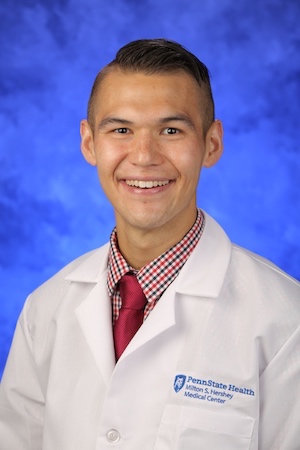
The total body skin exam (TBSE) is a common procedure performed on a regular basis by dermatologists and other providers. Despite research supporting skin exams, the United States Preventive Services Task Force (USPSTF) has reported that there is insufficient evidence on the benefits and harms of using TBSE for skin cancer screening.1
With this in mind, researchers at Penn State Health Milton S. Hersey Medical Center aimed to examine the most efficacious way to perform skin exams and identified best practices in their new study, which was published in the Journal of the American Academy of Dermatology.2
“We felt it could be beneficial to critically study the effects of completing TBSE, for teaching this technique to medical students and other practitioners, and for identifying ways that TBSE can be altered when working with individuals with different disabilities,” said corresponding author Matthew Helm, MD, with the department of dermatology at Penn State Health Milton S. Hersey Medical Center (left), in an interview with The Dermatologist.
The Study
In the observational study, Dr Helm and his colleagues reviewed video footage of 5 dermatology faculty members and 5 residents who performed TBSE on male and female participants wearing a patient gown and undergarments. They assessed exam time, physician movements, patient movements, sequence of body parts examined, and body parts missed during the exam.
“The engineering team helped analyze minor and major movements,” said Dr Helm. “We knew that elite athletes and others reported benefits from detailed analyses of their movements and thought that such a detailed analysis of TBSE could yield practical and actionable results.”
Movements were defined as changes in location or position, calculated for both physicians and patients, and separated into minor and major. Minor movements included standing, squatting, sitting, bending over, and/or titling the head. Major movements included walking to and around the bed and a patient rolling over and/or laying down.
In addition, time spent performing the exam was divided into total time (time spent examining body parts plus time spent on unnecessary movements) and effective time (time spent examining body parts) to determine the efficacy of TBSE.
Results
Overall, the time to complete TBSE ranged from 75 to 243 seconds. Although there was no statistical difference between total time examining a patient vs physician experience, there was a variability between providers in their efficiency and order of examination.
According to their findings, effective time per body part was highest for the head, followed by the legs, and arms. The neck had the highest frequency of being missed, followed by the underarms. “We did not expect the armpits and the underside of the neck to be the most frequently missed body parts, but now I am particularly aware to be careful when examining these areas,” said Dr Helm.
Average loss of efficacy on the male exam and female were 48.1 seconds and 42.3 seconds, respectively, which was due to unnecessary movements on the part of the physician and participant. Overall, one-third of the time for male participants and one-fourth the time for female participants was wasted on unnecessary movements.
While differences in doctor and patient movements were comparable between male and female exams, the mean number of movements was greater for male patients for both the patient and physician.
“We are not sure why there were more wasted movements when examining men” said Dr Helm. “We only had 1 male standardized patient so this could have been an artifact from our small sample size.” Futures studies will need to look into this further to see if their results are similar with a larger sample size of men, Dr Helm noted.
What Comprises an Effective Total Body Skin Exam?
Based on the researchers’ findings, the proposed TBSE with the highest efficacy is starting with the patient sitting while the dermatologist examines the anterior face, scalp, neck, chest, flank, stomach, arms, hands, legs, feet, and groin. Then, the patient stands and turns away from the physician so the physician can exam the posterior scalp, neck, back, posterior arms, legs, and buttocks.
“It surprised us to learn that it was the most efficient to have the examiner looking at the back and the back of the legs at the same time while the patient is standing,” said Dr Helm. “Prior to this study, I would examine the back with the patient sitting and then have them stand to look at the back of the legs.” This was considered inefficient movements for both physicians and patients, added Dr Helm.
Key Takeaways and Future Research
This study is one step towards addressing the gaps in understanding and improving the efficacy of total body skin exams, as well as establish a standard for future dermatologists. “In my experience, having a standard technique is always a great way to teach beginners, whether it is how to execute a basic stroke in tennis or learn a yoga position,” said Dr Helm. He and his colleagues hope this study prompts considerations for refining TBSE techniques.
However, participants, both physicians and patients, were healthy. “Speaking with other physicians who have back problems or other disabilities, and with patients with physical limitations, I can see that much more work should be done to identify modifications and ways of tailoring exams to particular situations and challenges,” said Dr Helm. He and his colleagues intend to pursue future studies that focus on “enhancing the patient experience.”
Dr Helm would like to acknowledge his Chair, Jeff Miller, MD, who planned and developed the concept for this research project, as well as his colleagues Kate Hallock, MD, and Elizabeth Bisbee, MD, whose efforts were instrumental to completing this study.
References
1. US Preventive Services Task Force. Behavioral counseling to prevent skin cancer: US Preventive Services Task Force recommendation statement. JAMA. 2018;319(11):1134–1142. doi:10.1001/jama.2018.1623
2. Helm MF, Hallock KK, Bisbee E, Miller JJ. Optimizing the total body skin exam: An observational cohort study [published online February 15, 2019]. J Am Acad Dermatol. doi:10.1016/j.jaad.2019.02.028























